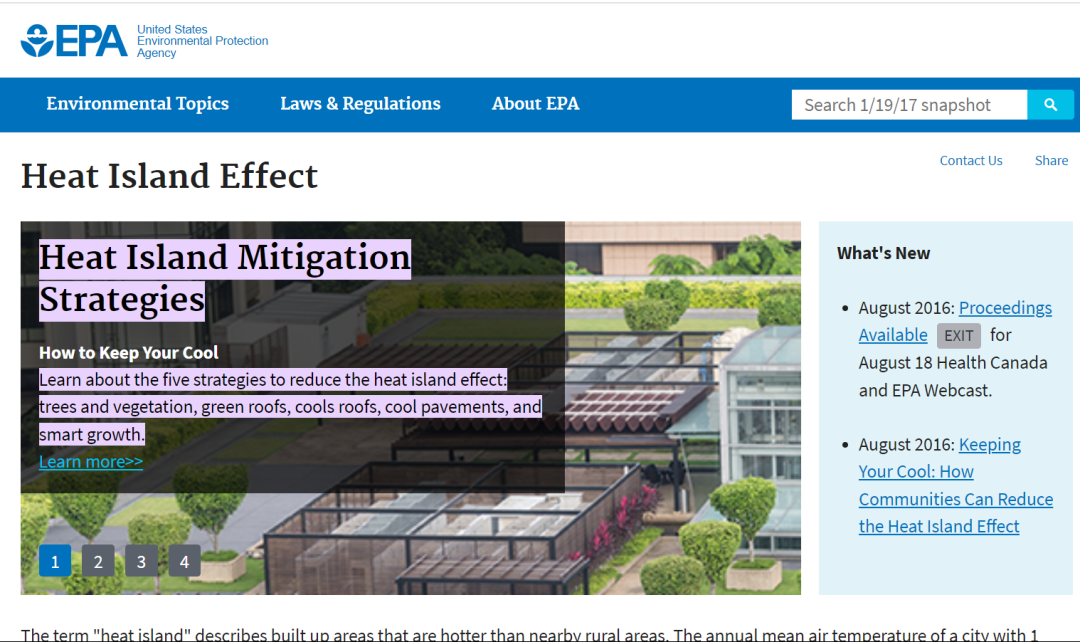Disclaimer:
Please be aware that the content herein is comprised of personal reflections, observations, and insights from our contributors. It is not necessarily exhaustive or authoritative, but rather reflects individual perspectives. While we aim for accuracy, we cannot guarantee the completeness or up-to-date nature of the content.
Images
Type of the Solution
Infrastructure Development, Urban Planning & Design
Affected Sector
Construction
Description of the solution
Urban Heat Island (UHI) mitigation strategies encompass a variety of approaches to reduce heat absorption and promote cooling effects in urban areas. Here are some key strategies:
-Increasing Vegetation and Green Space: Trees, shrubs, and other vegetation provide shade, absorb heat, and release cooling moisture through transpiration. This can involve planting trees along streets, creating green roofs, and establishing urban parks.
-Using Cool Materials for Roofs and Pavements: Replacing traditional dark roofs and pavements with lighter, reflective materials reduces heat absorption and lowers surface temperatures. This can involve using reflective coatings or installing green roofs.
-Promoting Smart Growth Practices: Urban planning that incorporates green infrastructure, encourages compact development, and minimizes heat-trapping concrete expanses can significantly reduce the urban heat island effect.
-Urban Water Features: Fountains, water streams, and strategically placed ponds can provide evaporative cooling and create a more comfortable microclimate.
Socio-economic effects
Reduced energy consumption for cooling buildings
Improved public health and thermal comfort
Potential for increased property values and aesthetics
Creation of green jobs in landscaping and green infrastructure
Improved air quality, potentially reducing respiratory illnesses
Type of Measure
3. mitigation measures
Type of sub-measure
5. (none)
Who led the solution
National government
Timescale of implementation
Long-term (5 and above)
Other Notes
Multi-Stakeholder Approach (National/Local Governments, Urban Planners, Communities, Businesses) lead the solution. Affected sectors are: Urban Planning, Construction, Public Health, Air Quality.
The effectiveness of UHI mitigation strategies depends on a combination of approaches tailored to the specific climate, geography, and existing infrastructure of a city. A comprehensive strategy that considers vegetation, cool materials, smart growth, and water features can significantly reduce the urban heat island effect and create more livable urban environments.
Urban Heat Island mitigation strategies can have a complex relationship with air quality, with both potential benefits and drawbacks. They can help reduce ozone formation and particulate matter concentrations but may require careful planning to avoid unintended consequences.
https://www.epa.gov/heatislands/heat-island-compendium
https://www.epa.gov/heatislands/heat-island-cooling-strategies
https://www.epa.gov/green-infrastructure/reduce-urban-heat-island-effect
https://www.epa.gov/heatislands
https://ww2.arb.ca.gov/sites/default/files/2020-08/us_epa.pdf
Links to the solution
 Consent to share form or official link.
Consent to share form or official link.

 11Sustainable cities and communities
11Sustainable cities and communities 13Climate action
13Climate action
Comments
Log in to add a comment or reply.